John Martin’s Destruction of Pompeii and Herculaneum is a dramatic work, showing the great volcano, Vesuvius, erupting over the ancient cities of Pompeii and Herculaneum. The painting was completed in around 1821 when people were very interested in big landscapes showing the destructive forces of nature.
Given its subject, perhaps it was fate when, on January 7 1928, the Thames burst its banks, flooding the basement at Tate Britain where the picture was being stored and completely submerging it. At the time, it was considered a lost cause. However, recent interest in Martin’s work and plans for a new exhibition led us to examine its remains, and we began a major restoration project in 2010.
Many flakes of paint had detached from the surface and were lost. Parts of the canvas on which the picture was painted had become weakened and torn apart, leaving a big gap right where the heart of the volcano should be.
The painting looks very dark in this image because it is covered with layers of dirt and yellowed varnish which had to be carefully removed. It had also been saturated with river water causing lots of paint to become detached and flake off. All the loose paint that had stayed in place has been stuck back down and all the little losses have been inpainted.
The section depicting the volcano and the cities had been completely destroyed, obliterating much of the compositional depth and leaving the scene difficult for viewers to understand.
The damaged edges also distracted from the original painting, as revealed by digitally tracking viewers’ eye movements to see where their attention was drawn.
We carefully reinstated the missing area of the canvas and repainted, drawing on photographs, a smaller painted replica of the composition by Martin and an outline etching of the original work. The new areas of painting are deliberately executed in a less detailed fashion, so as to ensure the viewer’s attention is drawn to Martin’s original work without compromising the power of the scene as a whole. In addition if you look closely and spend time with the painting you can see differences between the texture and appearance of the original paint and reconstructed areas.
Our frames conservation department also made this beautiful new frame for the work. We wanted something that looked appropriate to the period, based on three similar frames made for other Martins in the collection in the 1990’s. After a lot of deliberation we chose a largely black frame since there are reports of Martins other painting, Belshazzars Feast, being displayed in an ebonised frame around the time that this painting was executed.
I feel the final effect successfully re-instates the drama and impact of Martins original work, something I think he would have wanted. I very much look forward to hearing what you think of it when you visit the show!
John Martin: APOCALYPSE, Tate Britain, opens on 21 September 2011 and runs until 15 January 2012. Book tickets online or become a Tate Member or Tate Patron and visit for free.

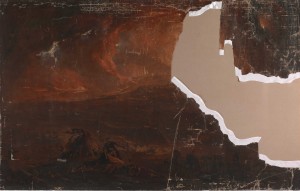
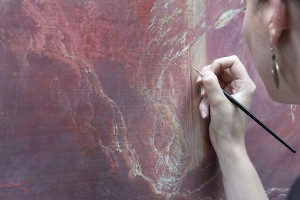
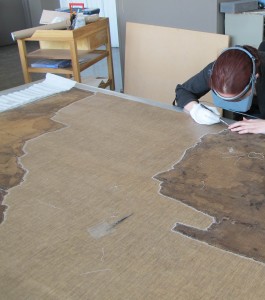
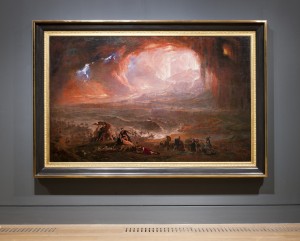
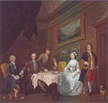






Looks great Sarah.
Noticed the “Ripping Yarns” event, but wasn’t aware until too late. Is there any material, handouts worth getting hold of?